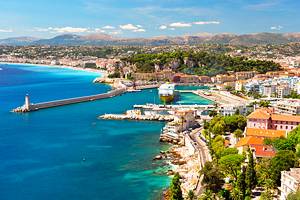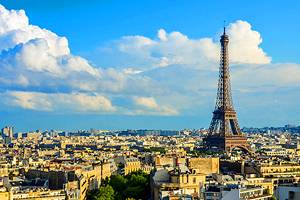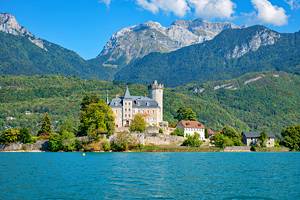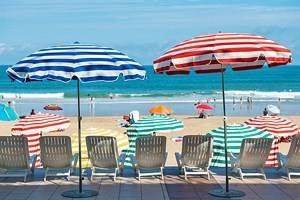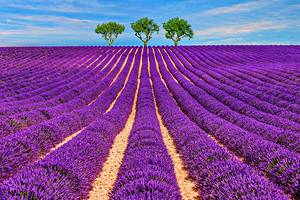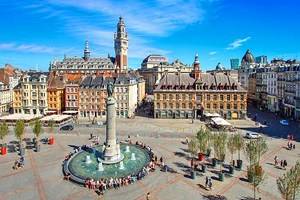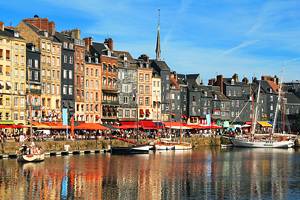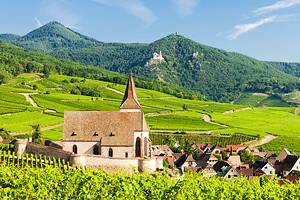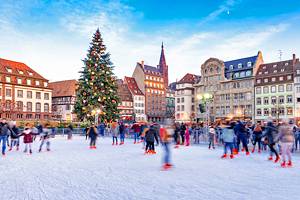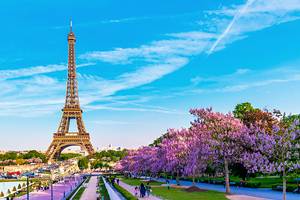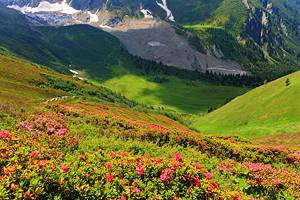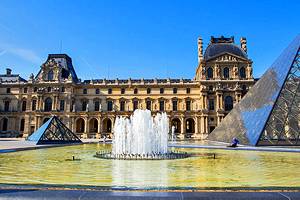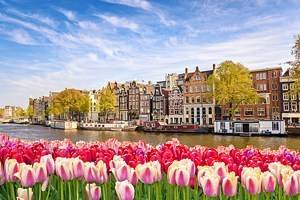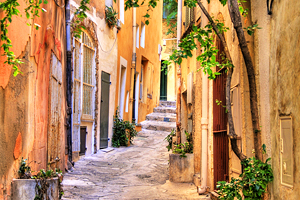Attractions & Places to Visit in the Limousin Region
Discover an off-the-beaten-path area of France that is rich in natural beauty and history. Green rolling hills, quaint country towns, and lush forests await you, along with fascinating cultural attractions such as medieval castles and many of the Plus Beaux Villages de France.
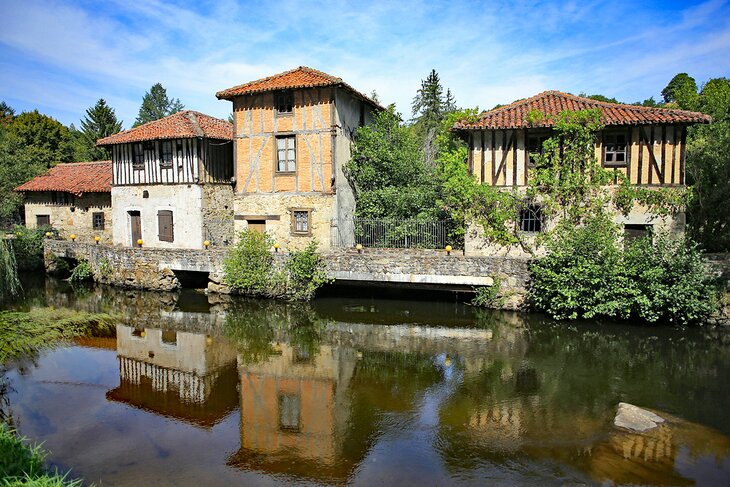
The area's regional nature parks are a paradise for sports enthusiasts. Opportunities abound for things to do, like hiking on the scenic trails, fishing in freshwater rivers, and boating on pristine lakes.
Plan your trip with our list of the top attractions and best places to visit in the Limousin region.
Aubusson
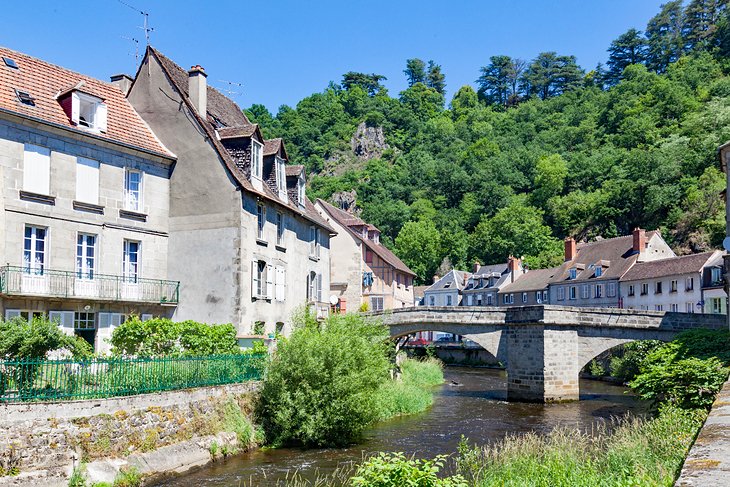
Since the 15th century, Aubusson has been renowned for its intricately patterned tapestries. For six centuries, the city has been a center for the industry of handcrafted tapestries.
Today, Aubusson is still considered the world capital of tapestries. In 2009, UNESCO inscribed Aubusson tapestry on the Representative List of the Intangible Cultural Heritage of Humanity.
You may visit tapestry workshops throughout the city, such as Espace Tapisseries Aubusson (32 Rue Vaveix), which renovates historic tapestries and has an art gallery that displays artistic tapestry pieces, and La Maison du Tapissier (63 Rue Vieille), a 17th-century tapestry workshop where visitors can watch a traditional weaving demonstration.
The Cité Internationale de la Tapisserie (Rue des Arts) is devoted to conserving the savoir-faire of traditional tapestry creation. The center has a museum that contains tapestries from the 15th century to the present day, including many 17th-century masterpieces.
Read More: Places to Visit in France
Limoges
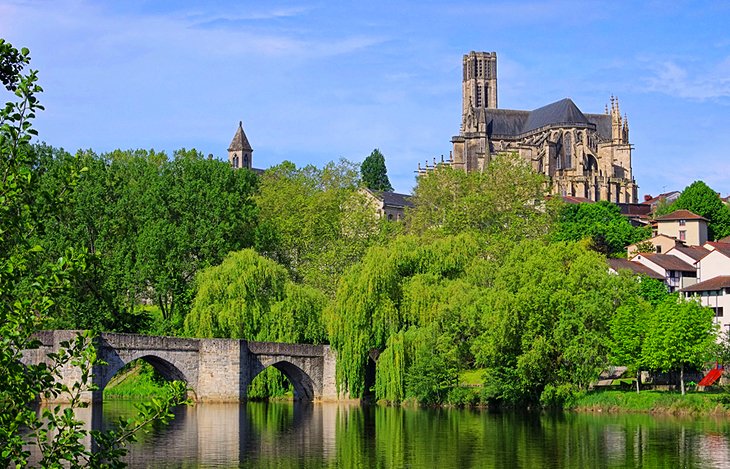
Designated a Ville d'Art et d'Histoire, Limoges has a rich cultural heritage. Admire the amazing historic monuments and wander the charming maze of cobblestone streets. Then explore the city's creative side by visiting the Maison Haviland porcelain manufacturer, a Limoges porcelain museum, and the Museum of Fine Arts.
The Cathédrale Saint-Etienne is the most important monument in Limoges (the capital of the Limousin region) and its only Gothic building. Begun in 1273, the cathedral continued to be renovated throughout the centuries.
Behind the cathedral are the Jardins de l'Evêché (Gardens of the Bishop), and to the east is the eight-arched Pont Saint-Etienne bridge built in the 13th century.
You should also stroll through the city's historic quarters along the Rue de la Boucherie and the Rue du Temple to soak up the city's old-world ambience.
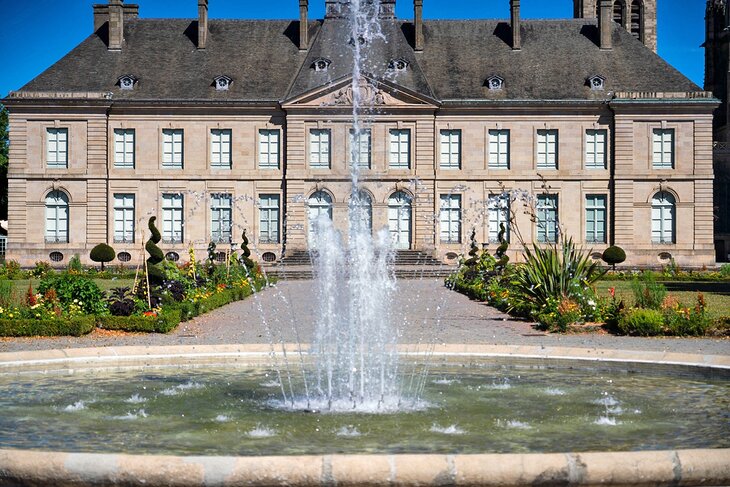
Impressionist painter Auguste Renoir began his career as a porcelain painter in Limoges. It's easy to see the connection between this artisan craft and the fine arts.
The Pavillon de la Porcelaine – Haviland showcases decorative porcelain dinnerware created by the Maison Haviland, a prestigious manufacturer of fine artisanal porcelain since 1842. The Pavillon de la Porcelaine – Haviland also has a boutique that sells Haviland dinnerware items.
The Musée National Adrien Dubouché highlights the beauty and variety of porcelain, the art form for which Limoges is famous. This museum displays the world's largest collection of Limoges porcelain along with pottery, faïence, and glassware.
In an 18th-century episcopal palace, the Musée des Beaux-Arts de Limoges presents exhibits of fine arts and archaeological artifacts. The collection includes Gallo-Roman and ancient Egyptian objects, medieval and Renaissance painted enamels, and Impressionist paintings.
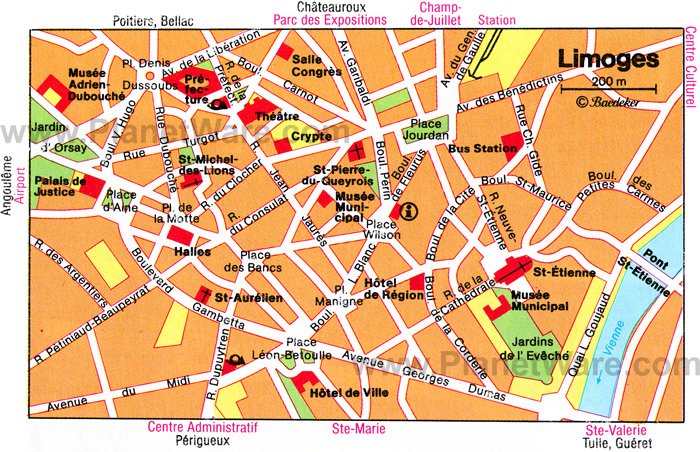
Uzerche
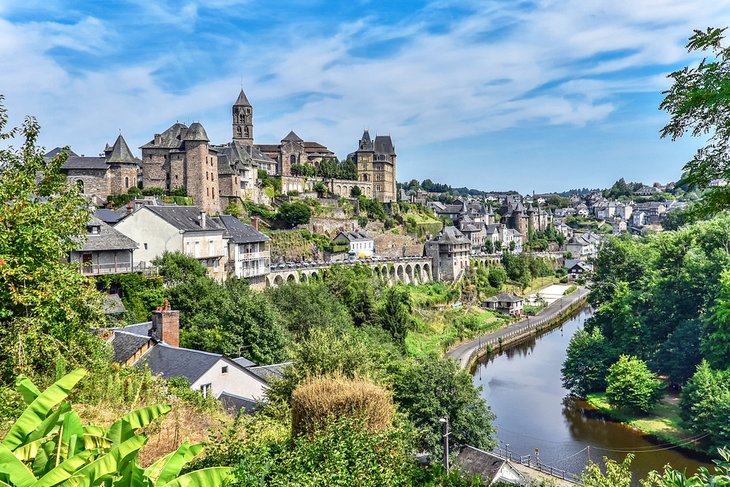
The "Pearl of Limousin" perches on a rocky outcrop overlooking the Vézère River. This medieval fortified town has many architectural treasures, including impressive old towers, atmospheric vaulted passages, and elegant hôtels particuliers (historic mansions).
Not to be missed is the Abbatiale Saint-Pierre d'Uzerche. This magnificent Romanesque church was built in the 11th and 12th centuries. Classified as a Monument Historique, the church was an important medieval pilgrimage destination.
After sightseeing, relax a bit and take a walk along the Esplanade de la Lunade. This pedestrian walkway overlooks the Vézère River and the wooded rolling hills surrounding the town.
During the summer, outdoor markets and cultural events draw many visitors. A medieval festival, the Jours de Fête, entertains crowds with music, circus acts, and burlesque theater in July.
In August, music lovers flock to Uzerche for the Journées Musicales d'Uzerche (MUZ' Festival) which presents a wide variety of classical music concerts.
Just outside of Uzerche, the countryside offers ample opportunities for hiking and nature walks.
Abbatiale Saint-Pierre Saint-Paul, Solignac
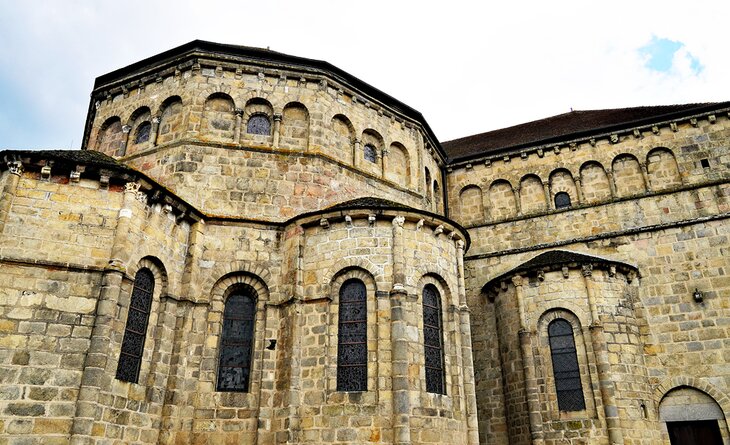
Discover soul-inspiring splendor at the Abbatiale Saint-Pierre Saint-Paul, one of the most important sights in the Limousin region. This 12th-century abbey church is a marvel of Romanesque architecture.
The spacious vaulted and domed interior features awe-inspiring 15th-century stained-glass windows. The choir incorporates carved wooden stalls adorned with unusual details including griffins, palm leaves, and snakes.
The Saint-Pierre Saint-Paul abbey church is open to the public during summertime for guided tours on Sunday afternoons at 3:30pm. Music concerts are sometimes held at the church.
The historic village of Solignac charms visitors with its pastel-shuttered old stone buildings and a pleasant ambience along the Briance River. Spanning the river is the 15th-century Pont-Vieux de Solignac (Old Bridge of Solignac), a graceful arched masonry bridge.
It's only a 15-kilometer drive (and well worth the detour) from Limoges to the Abbatiale Saint-Pierre Saint-Paul in Solignac.
Château de Val
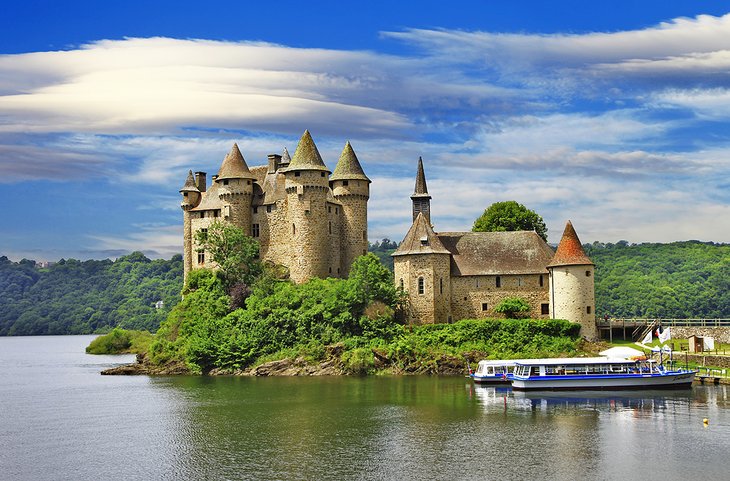
The Château de Val looks like an image from the pages of a child's storybook. The turreted castle stands in a romantic setting, on a rocky spur within the Lac de Bort-les-Orgues.
Built in the 15th century, the fortress with its grandiose Gothic rooms epitomizes medieval architecture. The castle's Chapelle Saint-Blaise is listed as a Monument Historique. The small Gothic chapel is found in the castle's main courtyard.
Unlike many French castles, the Château de Val is sumptuously furnished with period pieces, creating a good picture of what it was like to live here.
The castle grounds include a tranquil garden planted with many flowers. All around the property are quiet spots that invite visitors to commune with nature under a shady lime tree, by a fountain, or near the old stables. It's possible to take a bike ride around the estate and go fishing or boating on the Bort-les-Orgues Lake.
The Château de Val is open to the public for visits from February through early November. During July and August, the château hosts outdoor music concerts in the courtyard on Wednesday evenings. The program ranges from classical music to blues, rock, and folk music.
The Château de Val also offers spacious overnight accommodations in the modernized Royal Suite, which has a fully equipped kitchen, dining area, and an outdoor terrace that overlooks the lake. Accommodations include breakfast with fresh-baked croissants.
Address: Les Fontilles, 15270 Planorbe
Musée d'Art Contemporain de la Haute-Vienne
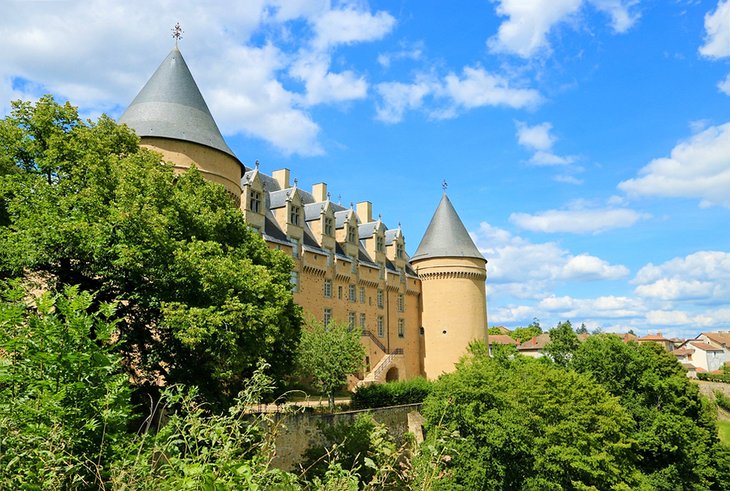
The Musée d'Art Contemporain de la Haute-Vienne (Museum of Contemporary Art) occupies the 16th-century Château de Rochechouart. This beautifully restored late Gothic and Renaissance castle is nestled between the Graine and Vayres valleys.
The museum's collection is devoted to 20th- and 21st-century art. On display are over 1,300 works created from the 1960s to the present day. Other highlights include the assortment of decorative arts objects, as well as unique commissioned pieces.
Equally noteworthy are the artworks found on the walls of the château, especially the 16th-century frescoes in the Salle des Chasses (depicting hunting scenes) and the Galerie d'Hercule (illustrating the labors of Greek mythological figure Hercules).
Address: Place du Château, 87600 Rochechouart
Parc Naturel Régional de Millevaches en Limousin
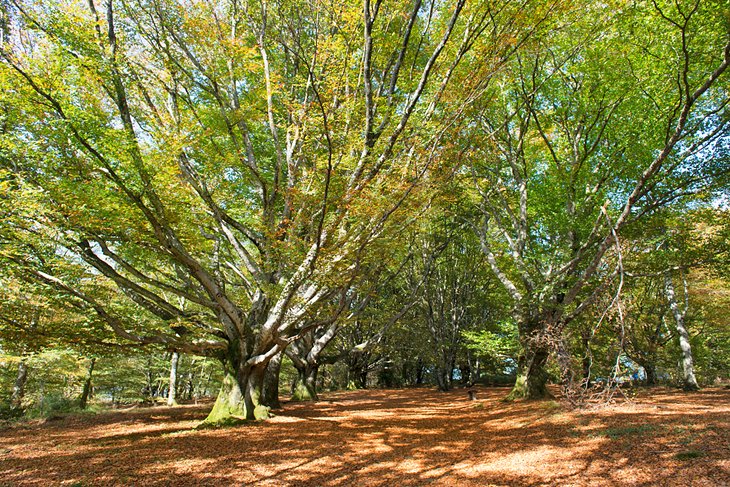
This regional natural park is a paradise of deep green forests, gently rolling hills, sheltered valleys, grassy meadows, and peaceful lakes. The park, which encompasses the Plateau de Millevaches, has freshwater rivers and streams that are home to river otters.
The Regional Natural Park of Millevaches is dotted with charming small hamlets and traversed by scenic trails. You can hike through the heathlands and oak groves and past verdant pastures where the famous Limousin cows graze.
Besides hiking and biking, other popular things to do outdoors are boating, fishing, and cycling.
If you plan to spend the night, you could reserve a campsite such as the three-star facilities at the Aux Portes des Mille Sources camping area. You can also find bed-and-breakfast hotels and vacation rental accommodations in the Regional Natural Park of Millevaches.
Saint-Léonard-de-Noblat
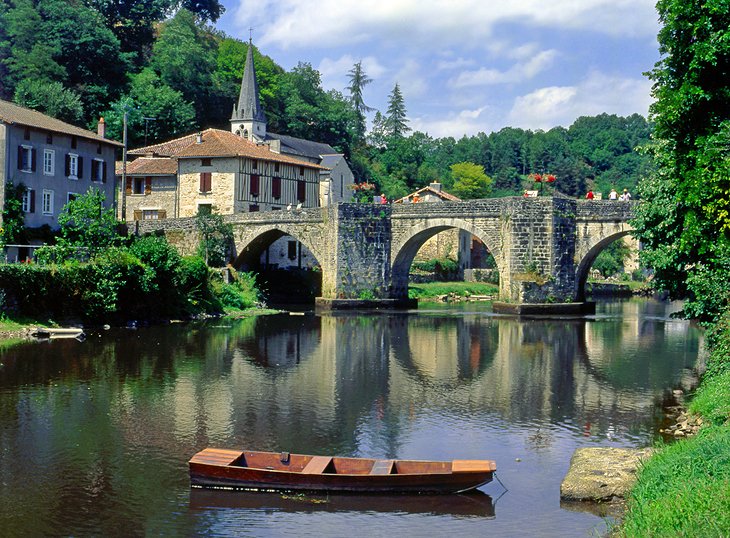
This quaint medieval town has a well-preserved historic center. Wandering the cobblestone streets and narrow alleys takes you on a journey back in time. Much of the town has not changed since the Middle Ages.
The Quartier de Noblat riverside district is especially atmospheric with its old mills and 13th-century bridge. You can arrive here by taking the Chemin du Pavé pedestrian path. This charming area is a delightful place for a stroll.
Not to be missed, the UNESCO-listed Collégiale de Saint-Léonard (dating to the 11th and 12th centuries) was a stop on the Chemin de Saint-Jacques pilgrimage trail to Santiago de Compostela in Spain.
In early July, the Fête de la Saint Martial takes place in the Quartier de Noblat. This lively festival includes a regional food market, traditional meals, music concerts, a ball with dancing, and fireworks. A highlight of the festival is the spectacle of a medieval-style equestrian tournament.
If you have a sweet tooth, be sure to try the local specialty called Massepain de Saint-Léonard, a little almond cookie that is crunchy on the outside and soft on the inside. The recipe has a Mediterranean origin and was brought to the town by pilgrims returning from Santiago de Compostela.
Collonges-la-Rouge
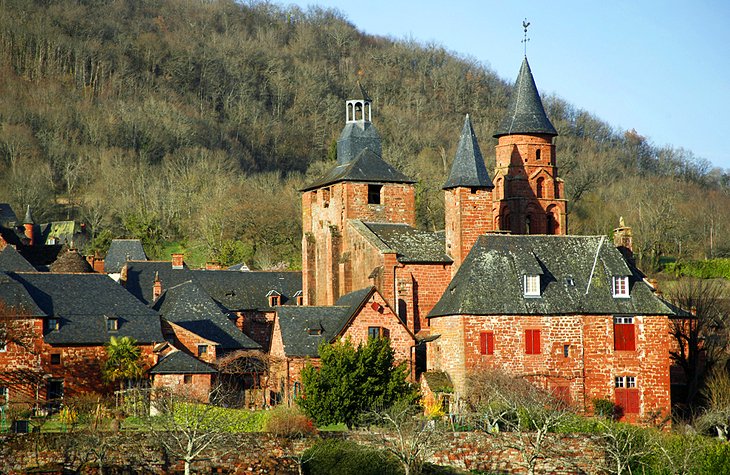
Nestled among meadows, walnut orchards, and forested rolling hills, Collonges-la-Rouge is listed as one of the Plus Beaux Villages de France. This bucolic idyll delights you with its winding cobblestone streets, pedestrian alleyways, and old turreted buildings.
Many buildings date back to the 15th and 16th centuries. The cottages, houses, and noblemen's mansions are constructed from red sandstone, which makes Collonges-la-Rouge incomparable to any other in France. Adding to the romance, wisteria and grape vines drape the stone walls of old monuments.
A must-see place to visit in Collonges-la-Rouge is the Eglise Saint-Pierre, built in the 11th and 12th centuries. This exquisite Romanesque church was visited by medieval pilgrims on the Chemin de Saint-Jacques trail to Santiago de Compostela, Spain. The church features an ornately sculpted tympanum and a gabled steeple.
Curemonte
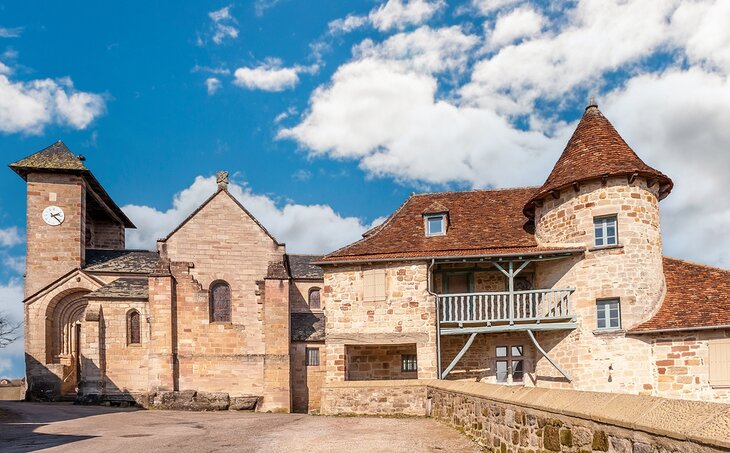
Thanks to its lush pastoral landscape and old-world charm, Curemonte is listed as one of the Plus Beaux Villages de France. The village's perfectly preserved squares and historic buildings also have made it popular as a filming location for movie sets.
The village perches on top of a rocky mount, overlooking the Valley of Maumont and the Valley of Sourdoire. Three medieval castles dominate the townscape; their impressive towers are visible from far in the distance.
Curemonte boasts a 12th-century Romanesque church, the Eglise Saint-Barthélemy, as well as the 11th-century Eglise Saint-Hilaire de la Combe which features contemporary stained-glass windows.
In this captivating village at the 14th-century Château Saint-Hilaire, the author Colette wrote Journal à Rebours.
Mortemart
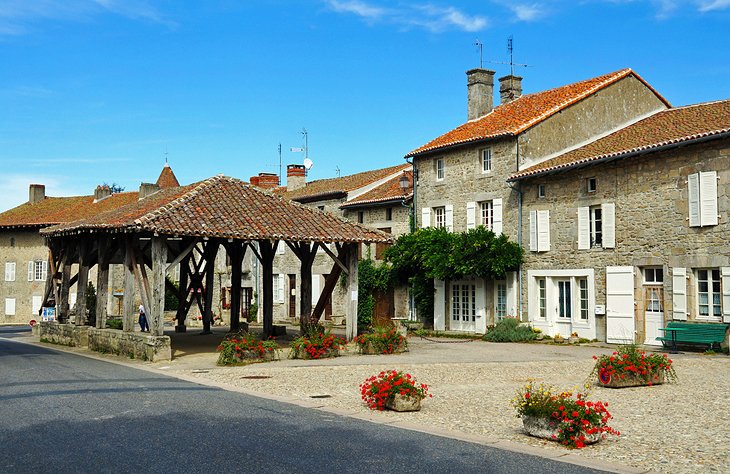
Mortemart is another one of the Plus Beaux Villages de France. This enchanting village is prized for its impressive architecture. Stately noblemen's mansions reflect the town's wealthy heritage.
Two historic convents are found here. The 14th-century Carmelite convent, the Couvent des Carmes, today hosts artists in residence. You may visit their ateliers. Also dating to the 14th century, the Eglise Saint-Hilaire is a humble little chapel in a former Augustinian convent. The Eglise Saint-Hilaire is now the village's parish church.
The town was built up around a 10th-century castle, the Château des Ducs, which was home to the Dukes of Mortemart. Although it is mostly in ruins, the tower and a few rooms have survived. Temporary exhibits are held within these remaining rooms.
In the center of the city is an old covered Market Hall that dates to the 18th century. Restored in 2013, the Market Hall is now used for open-air markets on Sundays during summertime. Beneath the wood-beamed canopy, local farmers sell fresh fruits, vegetables, and other regional products.
Ségur-le-Château
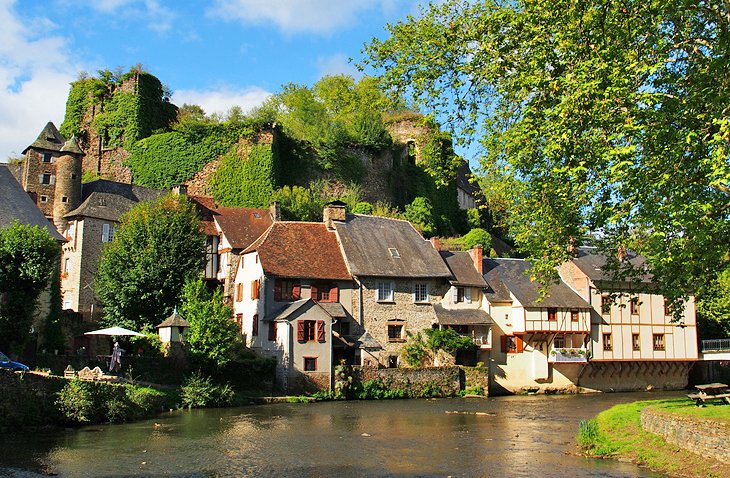
Ségur-le-Château is yet another one of the region's Plus Beaux Villages de France. The village is tucked away in a riverside location favored by the Viscounts of Limoges.
Spend some time exploring the narrow pedestrian lanes that date to the medieval era. Along the way, stop to admire handsome half-timbered houses and turreted noblemen's mansions. You can feel the historic ambience at every corner of the village.
On a sunny day, it's pleasant to go for a ramble along Les Bords de l'Auvézère, a tree-shaded path that parallels the meandering Auvézère River. Locals and tourists alike come here to relax on the park benches, or enjoy a picnic.


